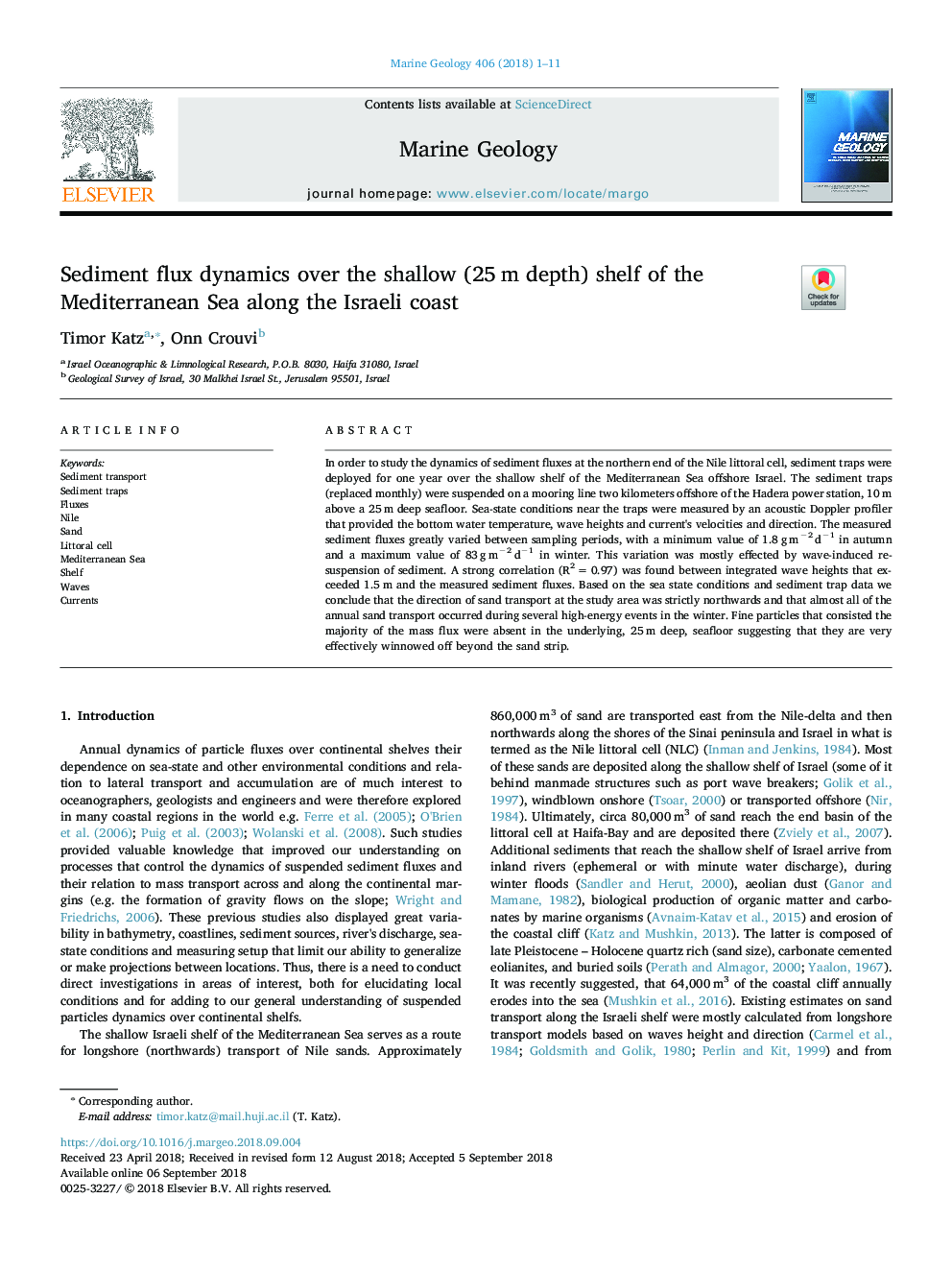| Article ID | Journal | Published Year | Pages | File Type |
|---|---|---|---|---|
| 9533531 | Marine Geology | 2018 | 11 Pages |
Abstract
In order to study the dynamics of sediment fluxes at the northern end of the Nile littoral cell, sediment traps were deployed for one year over the shallow shelf of the Mediterranean Sea offshore Israel. The sediment traps (replaced monthly) were suspended on a mooring line two kilometers offshore of the Hadera power station, 10â¯m above a 25â¯m deep seafloor. Sea-state conditions near the traps were measured by an acoustic Doppler profiler that provided the bottom water temperature, wave heights and current's velocities and direction. The measured sediment fluxes greatly varied between sampling periods, with a minimum value of 1.8â¯gâ¯mâ2â¯dâ1 in autumn and a maximum value of 83â¯gâ¯mâ2â¯dâ1 in winter. This variation was mostly effected by wave-induced resuspension of sediment. A strong correlation (R2â¯=â¯0.97) was found between integrated wave heights that exceeded 1.5â¯m and the measured sediment fluxes. Based on the sea state conditions and sediment trap data we conclude that the direction of sand transport at the study area was strictly northwards and that almost all of the annual sand transport occurred during several high-energy events in the winter. Fine particles that consisted the majority of the mass flux were absent in the underlying, 25â¯m deep, seafloor suggesting that they are very effectively winnowed off beyond the sand strip.
Keywords
Related Topics
Physical Sciences and Engineering
Earth and Planetary Sciences
Geochemistry and Petrology
Authors
Timor Katz, Onn Crouvi,
